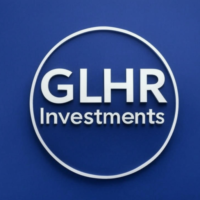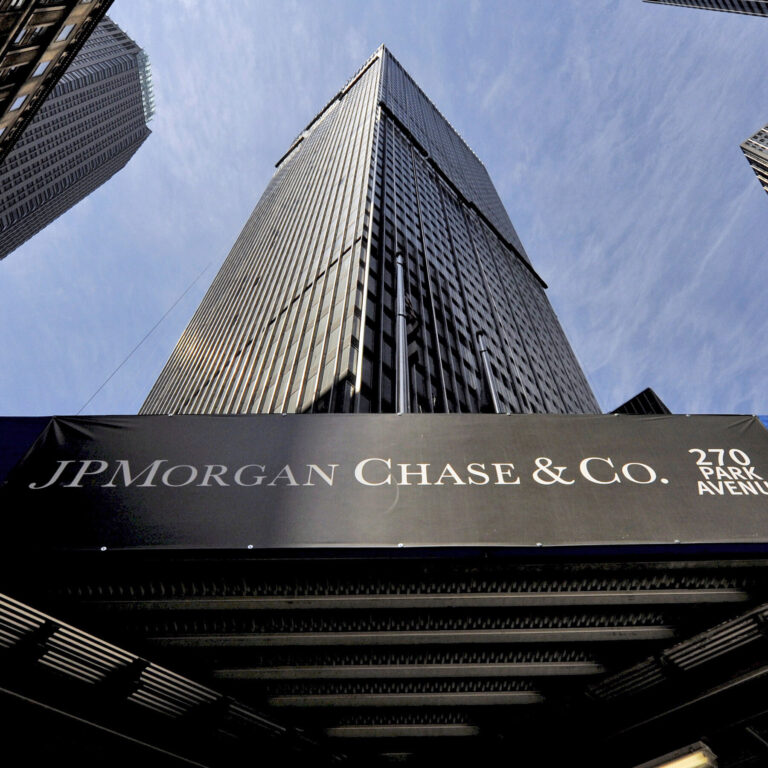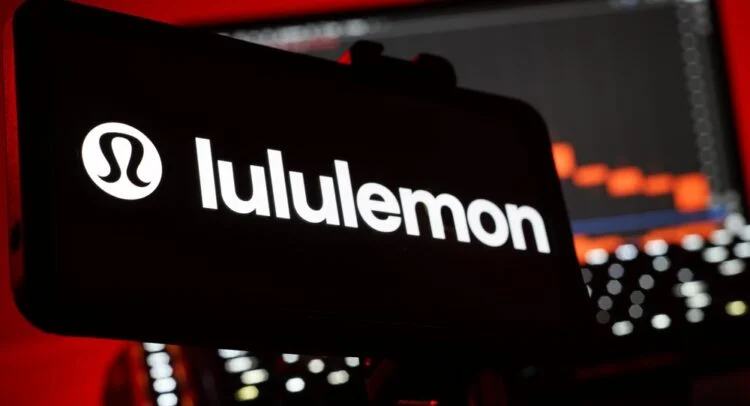
Trump’s August 2025 actions drive market volatility.
At GLHR Investing, we’re diving into President Donald Trump’s 2025 tax cuts, dubbed “Tax Cuts 2.0” through the “One Big Beautiful Bill Act” (OBBBA), to uncover their impact on the U.S. stock market and identify winning sectors and stocks. Passed by the House on May 22, 2025, and under Senate consideration, the OBBBA extends the 2017 Tax Cuts and Jobs Act (TCJA) while introducing new provisions, boosting consumer spending but adding $3.1–$3.8 trillion to deficits. With the S&P 500 (SPY) down 4.17% year-to-date at $513.88 as of May 23, 2025, and rallying ~14.8–16.7% in June to ~6,000 points, who stands to gain from these tax cuts? Amid tariffs, 3.2% CPI inflation, and a 60% recession risk, here’s a comprehensive analysis of Trump’s tax cuts, their market effects, top stock picks, and strategies to capitalize on 2025’s opportunities.
- Trump’s Tax Cuts 2.0: Key Provisions (OBBBA):
- Overview:
- The OBBBA, passed by the House on May 22, 2025, extends TCJA provisions expiring in 2025, adding temporary enhancements like no taxes on tips, overtime pay, and Social Security benefits, per web data.
- Senate Finance Committee’s version (June 16) includes permanent TCJA provisions and a higher SALT cap, reducing federal revenue by $3.8–$4.7 trillion over 2025–2034, per web data.
- Key Provisions:
- Individual Tax Cuts: Extends lower tax brackets, doubles standard deduction ($14,600 to $29,200 for singles), and increases child tax credit ($2,000 to $2,500/child), per web data.
- SALT Cap Increase: Raises state and local tax (SALT) deduction cap from $10,000 to $40,000, benefiting high-income households in high-tax states (e.g., CA, NY), per web data.
- Business Incentives: Restores 100% bonus depreciation, extends 20% pass-through business deduction, and proposes a 15% corporate tax rate for domestic manufacturers (from 21%), per web data.
- Revenue Offsets: Repeals clean energy tax credits ($500B over 10 years), introduces a 3.5% foreign remittance tax, and raises university endowment taxes, per web data.
- Temporary Provisions: No taxes on tips, overtime, and Social Security benefits, set to expire by 2028, creating a “tax cliff,” per web data.
- Economic Impact:
- Growth: House bill increases long-run GDP by 0.8%, adds 983,000 jobs, and boosts wages by <0.05%; Senate bill projects 1.1% GDP growth and 892,000 jobs, per web data.
- Deficits: House bill adds $3.1T (dynamic) to $4.0T (conventional) to deficits; Senate bill adds $3.8T (dynamic) to $4.7T, per web data.
- Distribution: 60% of tax benefits go to the top 20% of households, with low-income earners potentially worse off due to spending cuts (e.g., Medicaid, SNAP), per web data.
- Critical Assessment:
- The OBBBA’s pro-growth measures (e.g., business deductions) are offset by tariff costs (reducing GDP by up to 8%) and deficit-driven yield spikes (10-year at 4.46%), per web data.
- Claims of $5,000/year take-home pay increases are overstated; median households may see $1,700, with lower earners facing net losses from spending cuts, per web data.
- Overview:
- Stock Market Context (June 2025):
- Performance:
- SPY surged to ~6,000 points by June 18, up ~14.8–16.7% for June, but down 15.6% YTD, with volatility (VIX ~20.6) driven by tariffs and Iran-Israel conflict, per web data.
- Nasdaq gained ~2.18% by June 8, led by tech, but lagged ~0.8–1.2% YTD, per web data.
- Sectors like industrials (+8% YTD), healthcare (+3%), and energy (+10%) outperformed, while consumer discretionary (-1.5%) and tech lagged, per web data.
- Trump’s Other Policies:
- Tariffs: 125% on China, 25% on Canada/Mexico (paused until July 9), and 50% steel tariffs (June 4) raised costs 5–10%, offsetting tax cut benefits for lower-income households, per web data.
- Iran-Israel Conflict: U.S. bombing of Iranian nuclear sites (June 21) spiked oil prices ~10% to ~$80/barrel, risking inflation to 5–6%, per web data.
- Deregulation: Reduced oversight in AI and tech supports innovation but risks lax standards, per web data.
- Economic Indicators:
- Q1 GDP contracted -0.3%, with Q2 estimated at 1.5–1.9%, below 2024’s 2.7%, due to tariffs and 13% retail spending cuts, per web data.
- Inflation hit 3.2% CPI in June, projected to reach 4–4.5% by year-end, with oil-driven risks, per web data.
- Unemployment at 4.2% (April), with job growth at ~100,000/month, per web data.
- Performance:
- Stock Market Winners from Tax Cuts 2.0:
- Sectors Poised to Benefit:
- Financials: Lower corporate taxes (15% proposed) and deregulation boost margins, with banks (e.g., JPMorgan) gaining from higher consumer spending, per web data.
- Industrials: 100% bonus depreciation and domestic manufacturing tax cuts support capital investment, benefiting machinery and construction, per web data.
- Consumer Services: OBBBA’s $1,700/family tax cuts spur discretionary spending (0.3–0.5%), lifting retail and entertainment, per web data.
- Energy: Reduced clean energy credits shift focus to fossil fuels, with oil price spikes ($80/barrel) from Iran-Israel conflict adding upside, per web data.
- Market Reaction:
- SPY rallied ~1.5% from June 2–10 after U.S.-China tariff rollback to 55%, with financials and industrials leading, per web data.
- Post-OBBBA passage (May 22), the Morgan Stanley Domestic Tax Policy Beneficiaries Index (industrials, energy) outperformed Russell 2000 by ~7%, per web data.
- Bond yields spiked to 4.46% (June 17), pressuring growth stocks (e.g., tech), per web data.
- Top 10 Stock Picks:
- JPMorgan Chase & Co. (JPM):
- Price: ~$200, Yield: 2.3%, YTD: Up ~15%, per web data.
- P/E: ~12, undervalued vs. sector, per web data.
- Why Buy: Benefits from higher consumer spending and deregulation, Q4 2024 revenue up 12%, per web data.
- Action: Buy near $190, target $220–$230, per web data.
- Bank of New York Mellon (BK):
- Price: ~$79, Yield: 2.2%, YTD: Up ~15%, per web data.
- P/E: 14, 13% EPS growth, per web data.
- Why Buy: Gains from tax cuts and market volatility, per web data.
- Action: Buy near $75, target $95, per web data.
- Caterpillar Inc. (CAT):
- Price: ~$330, Yield: 1.7%, YTD: Up ~10%, per web data.
- P/E: ~15, benefits from bonus depreciation, per web data.
- Why Buy: Domestic manufacturing boost, Q4 2024 sales up, per web data.
- Action: Buy near $320, target $360–$380, per web data.
- Fastenal Company (FAST):
- Price: ~$70, Yield: 2%, YTD: Up ~10%, per web data.
- P/E: 28, growth-driven, per web data.
- Why Buy: Industrial distributor gains from tax-driven capital spending, per web data.
- Action: Buy near $65, target $80–$85, per web data.
- Walmart Inc. (WMT):
- Price: ~$80, Yield: 1%, YTD: Up 15%, per web data.
- P/E: 30, defensive retail, per web data.
- Why Buy: Benefits from consumer spending boost, tariff-resistant, per web data.
- Action: Buy near $75, target $85–$90, per web data.
- Dick’s Sporting Goods, Inc. (DKS):
- Price: ~$200, Yield: 2.2%, YTD: Up ~15%, per web data.
- P/E: ~15, undervalued, per web data.
- Why Buy: Retail growth from tax cuts, experiential stores, per web data.
- Action: Buy near $190, target $220–$230, per web data.
- ExxonMobil Corporation (XOM):
- Price: ~$115, Yield: 3.3%, YTD: Up ~10%, per web data.
- P/E: 13, benefits from clean energy credit repeal, per web data.
- Why Buy: Oil price spikes ($80/barrel) and tax cuts boost profits, per web data.
- Action: Buy near $110, target $125–$130, per web data.
- Chevron Corporation (CVX):
- Price: ~$150, Yield: 4.2%, YTD: Up ~8%, per web data.
- P/E: 14, strong fundamentals, per web data.
- Why Buy: Fossil fuel focus amid oil volatility, per web data.
- Action: Buy near $140, target $160–$170, per web data.
- Madison Square Garden Sports Corp. (MSGS):
- Price: ~$190, Yield: 4%, YTD: Up ~5%, per web data.
- P/E: ~20, stable fan base, per web data.
- Why Buy: Consumer services gain from tax-driven spending, per web data.
- Action: Buy near $180, target $210–$220, per web data.
- DraftKings Inc. (DKNG):
- Price: ~$40, Yield: 0%, YTD: Up ~40%, per web data.
- P/E: N/A (unprofitable), high growth, per web data.
- Why Buy: Sports betting boom ($33B market) fueled by tax cuts, per web data.
- Action: Buy near $35, target $50–$55, per web data.
- JPMorgan Chase & Co. (JPM):
- Sectors Poised to Benefit:
- Risks:
- Deficit and Yield Spikes: OBBBA’s $3.1–$3.8T deficit increase pushed 10-year yields to 4.46%, pressuring growth stocks (e.g., tech), per web data.
- Tariff Offsets: 125% China tariffs and 50% steel tariffs reduce GDP by up to 8%, offsetting tax cut benefits, especially for lower-income households, per web data.
- Inflation Surge: CPI at 3.2%, potentially hitting 4–4.5% (or 5–6% with Iran-Israel oil spikes), could delay Fed rate cuts (4.25–4.5%), impacting consumer spending, per web data.
- Recession Risk: 60% probability could curb discretionary spending, hitting retail and services, per web data.
- Spending Cuts: Reductions in Medicaid and SNAP may offset tax benefits for low-income households, per web data.
- Investor Strategy:
- Why Invest Now?:
- Tax cuts boost consumer spending (0.3–0.5%) and corporate profits, favoring financials, industrials, and consumer services, per web data.
- Undervalued stocks (e.g., JPM P/E 12, FAST P/E 28) offer value amid high market valuations, per web data.
- Rate cuts (1.9 projected for 2025) could lift cyclicals, per web data.
- Portfolio Allocation:
- Allocate 10–15% to tax beneficiaries (JPM, CAT, WMT, DKNG), 40% to defensives (JNJ, PG), and 30% to bonds (Treasuries) for stability, per prior analyses.
- Hedge with 3–5% in gold (GLD, +3%) or utilities (XLU, +1%) to counter inflation and tariff risks, per web data.
- ETFs for Diversification:
- Financial Select Sector SPDR Fund (XLF): ~$45, 1.5% yield, up ~10% YTD, tracks JPM, BK, per web data. Buy near $42, target $50.
- Industrial Select Sector SPDR Fund (XLI): ~$120, 1.5% yield, up ~5% YTD, tracks CAT, FAST, per web data. Buy near $115, target $130–$140.
- Energy Select Sector SPDR Fund (XLE): ~$90, 3% yield, up ~10% YTD, tracks XOM, CVX, per web data. Buy near $85, target $100.
- Timing:
- Buy on SPY dips near $5800 or stock pullbacks (e.g., JPM <$190), per web data.
- Dollar-cost average ($500–$1,000/month) to manage VIX (~20–25), per web data.
- Key Catalysts to Monitor:
- July 9 Tariff Deadline: Reinstatement could hit consumer goods, per web data.
- June 17–18 FOMC Meeting: Rate cut signals (20% chance in July) could boost cyclicals, per web data.
- Q2 Earnings (July): Confirm financial and retail growth, per web data.
- Iran-Israel Conflict: Oil at $80/barrel risks inflation (5–6%), per web data.
- Senate OBBBA Progress: Deficit concerns could spike yields, per web data.
- Why Invest Now?:
- Conclusion: Winning with Tax Cuts 2.0:
- Trump’s Tax Cuts 2.0, via the OBBBA, extend TCJA provisions and add consumer and business incentives, boosting GDP by 0.8–1.1% but adding $3.1–$3.8T to deficits. Financials (JPM), industrials (CAT), and consumer services (WMT, DKNG) are poised to win from increased spending and deregulation, despite tariff and inflation headwinds. With SPY up ~14.8% in June but down 15.6% YTD, investors should buy undervalued picks on dips, diversify with ETFs (XLF, XLI), and hedge against volatility to capitalize on the tax-driven rally.
- Why It Matters: In 2025’s turbulent economy, Trump’s tax cuts fuel opportunities in financials, industrials, and energy, but deficits and tariffs (125% China) pose risks. With SPY at ~6,000 points and 3.2% CPI inflation, picks like JPMorgan (P/E 12) and Walmart (up 15% YTD) offer growth and stability. GLHR Investing guides you to navigate Tax Cuts 2.0, building a resilient portfolio in a high-stakes market.
Invest smart with GLHR Investing—ride the tax cut wave, secure your wealth!
Disclaimer: GLHR Investing is not a financial adviser; please consult one.








